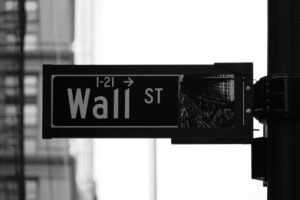The Pros and Cons of Using an Automated Forex Trading System
In recent years, the popularity of automated forex trading systems has been on the rise. These systems, also known as expert advisors or forex robots, are designed to automatically execute trades in the forex market based on pre-defined trading strategies. While some traders swear by the effectiveness of these systems, others remain skeptical. In this article, we will explore the pros and cons of using an automated forex trading system.
Pros
1. Emotion-free trading: One of the biggest advantages of using an automated forex trading system is the elimination of emotions from the trading process. Emotions such as fear and greed can often cloud a trader’s judgment and lead to irrational decision-making. By relying on a robot to execute trades, traders can avoid making impulsive and emotionally-driven decisions.
2. Increased speed and efficiency: Forex robots are capable of analyzing vast amounts of data and executing trades much faster than a human trader ever could. This can be particularly advantageous in a fast-paced market where every second counts. Automated systems can react to market movements instantaneously, ensuring that opportunities are not missed.
3. Backtesting capabilities: Another significant advantage of using an automated forex trading system is the ability to backtest trading strategies. Backtesting involves running historical data through the system’s algorithm to see how it would have performed in the past. This allows traders to evaluate the effectiveness of their strategies and make necessary adjustments before risking real money in the market.
4. 24/7 trading: Unlike human traders who need rest and sleep, forex robots can operate 24 hours a day, 7 days a week. This means that trading opportunities are not limited to specific time zones or trading sessions. Automated systems can continuously monitor the market and execute trades even when the trader is not available, ensuring that no potential profit is missed.
Cons
1. Lack of adaptability: One of the main drawbacks of using an automated forex trading system is its lack of adaptability to changing market conditions. These systems are typically programmed to follow specific trading rules and strategies. However, the forex market is dynamic, and conditions can change rapidly. If the system is not regularly updated or adjusted, it may fail to generate profits or even incur losses.
2. Dependency on technology: Automated forex trading systems rely heavily on technology and internet connectivity. If there are technical issues or internet outages, the system may not function properly, potentially leading to missed trading opportunities or even financial losses. Traders using automated systems need to ensure that they have a reliable internet connection and backup systems in place to minimize such risks.
3. Over-optimization: When backtesting a trading strategy, there is a risk of over-optimization, also known as curve-fitting. This occurs when a strategy is fine-tuned to perform exceptionally well on historical data but fails to produce similar results in real-time trading. Over-optimized systems may be too rigid and lack the ability to adapt to changing market conditions.
4. Lack of human judgment: While automated forex trading systems can analyze data and execute trades based on pre-defined rules, they lack the human judgment and intuition that can be crucial in decision-making. Market conditions can sometimes be unpredictable, and a robot may not be able to make the necessary adjustments that a human trader could.
In conclusion, automated forex trading systems offer several advantages, including emotion-free trading, increased speed and efficiency, and the ability to backtest strategies. However, they also come with drawbacks, such as the lack of adaptability, dependency on technology, over-optimization, and the absence of human judgment. Traders considering using automated systems should carefully weigh these pros and cons before making a decision. It is crucial to thoroughly research and test any system before entrusting it with real money, and to monitor its performance regularly to ensure it aligns with one’s trading goals and risk tolerance.






